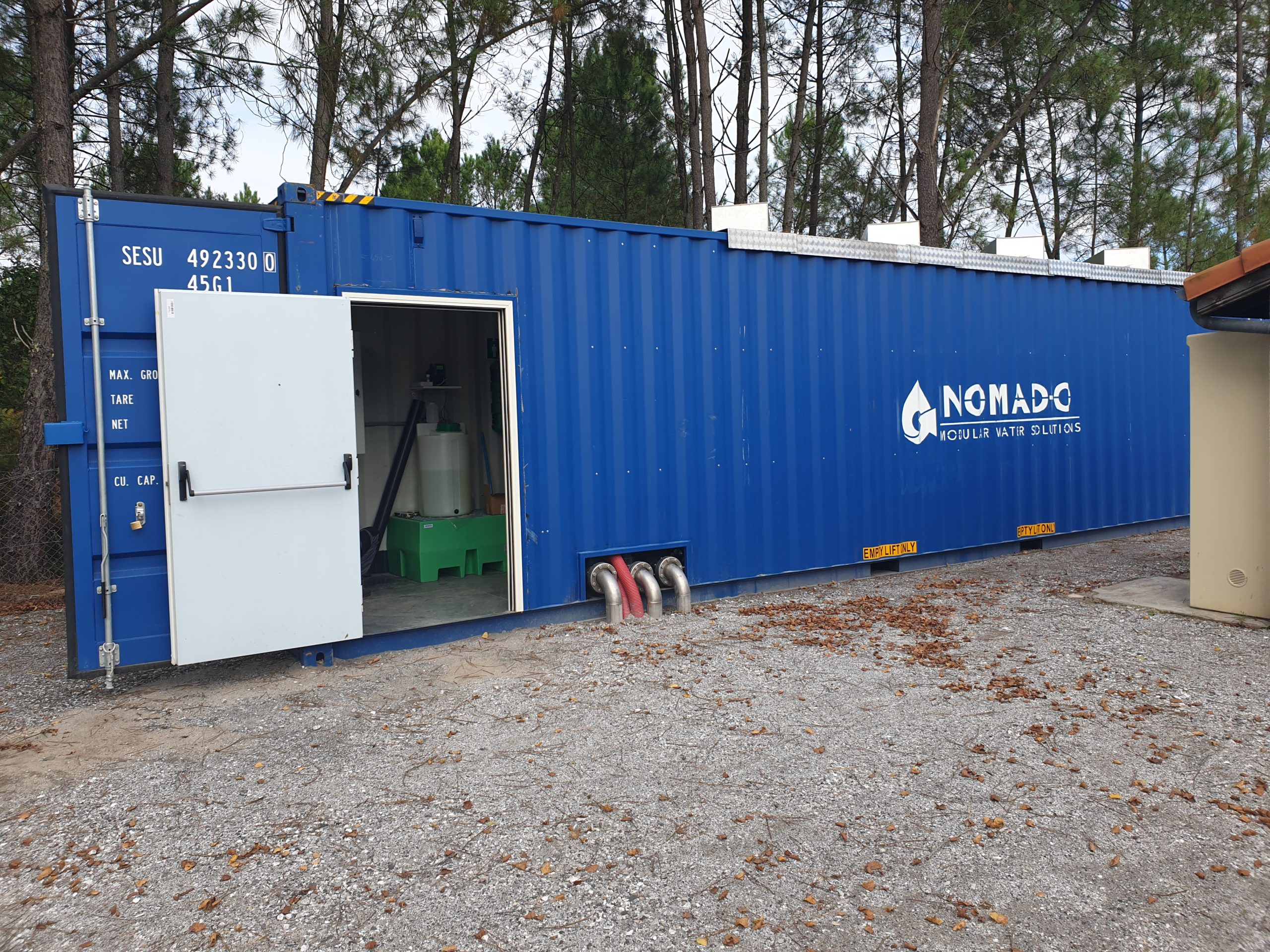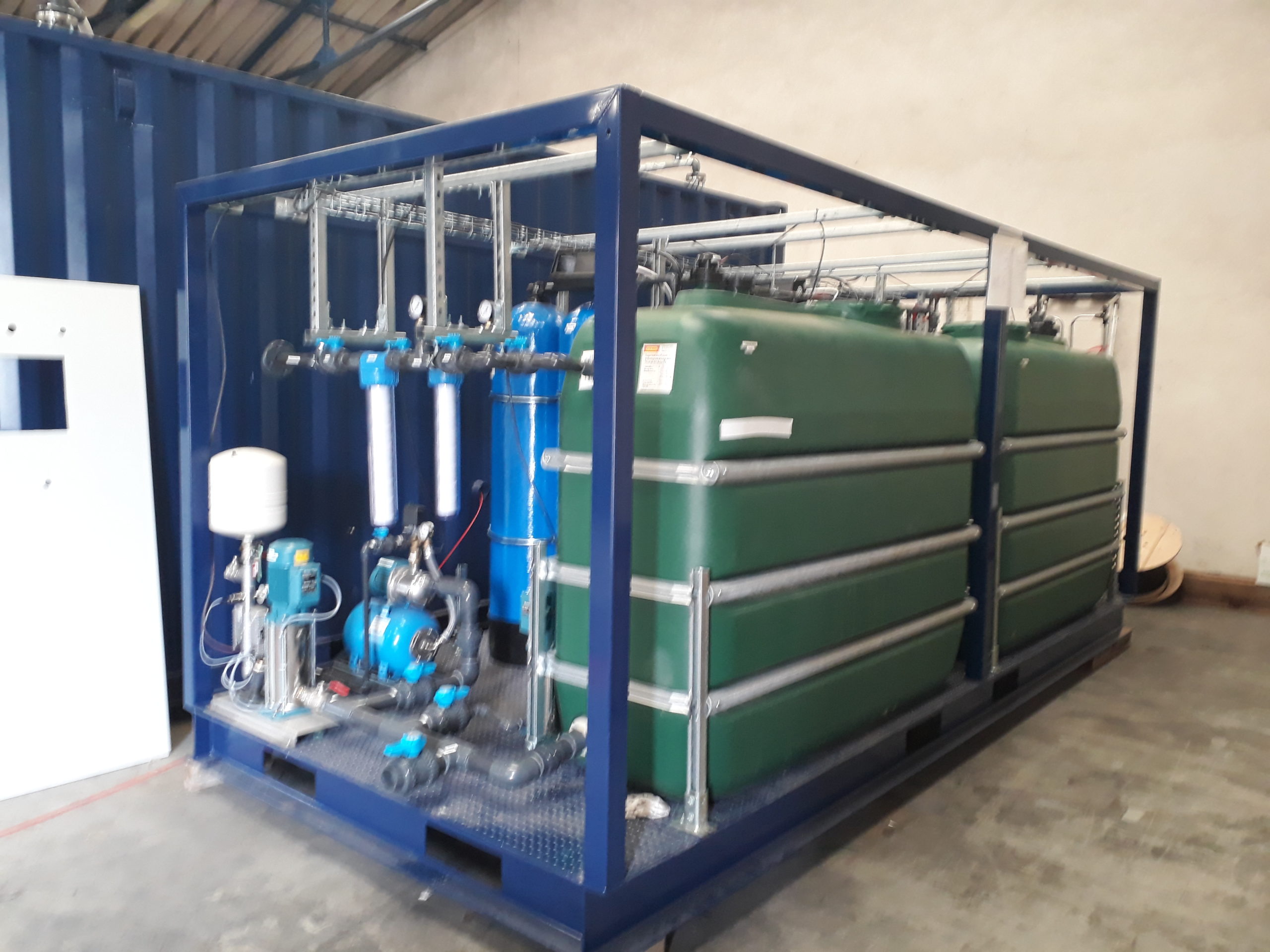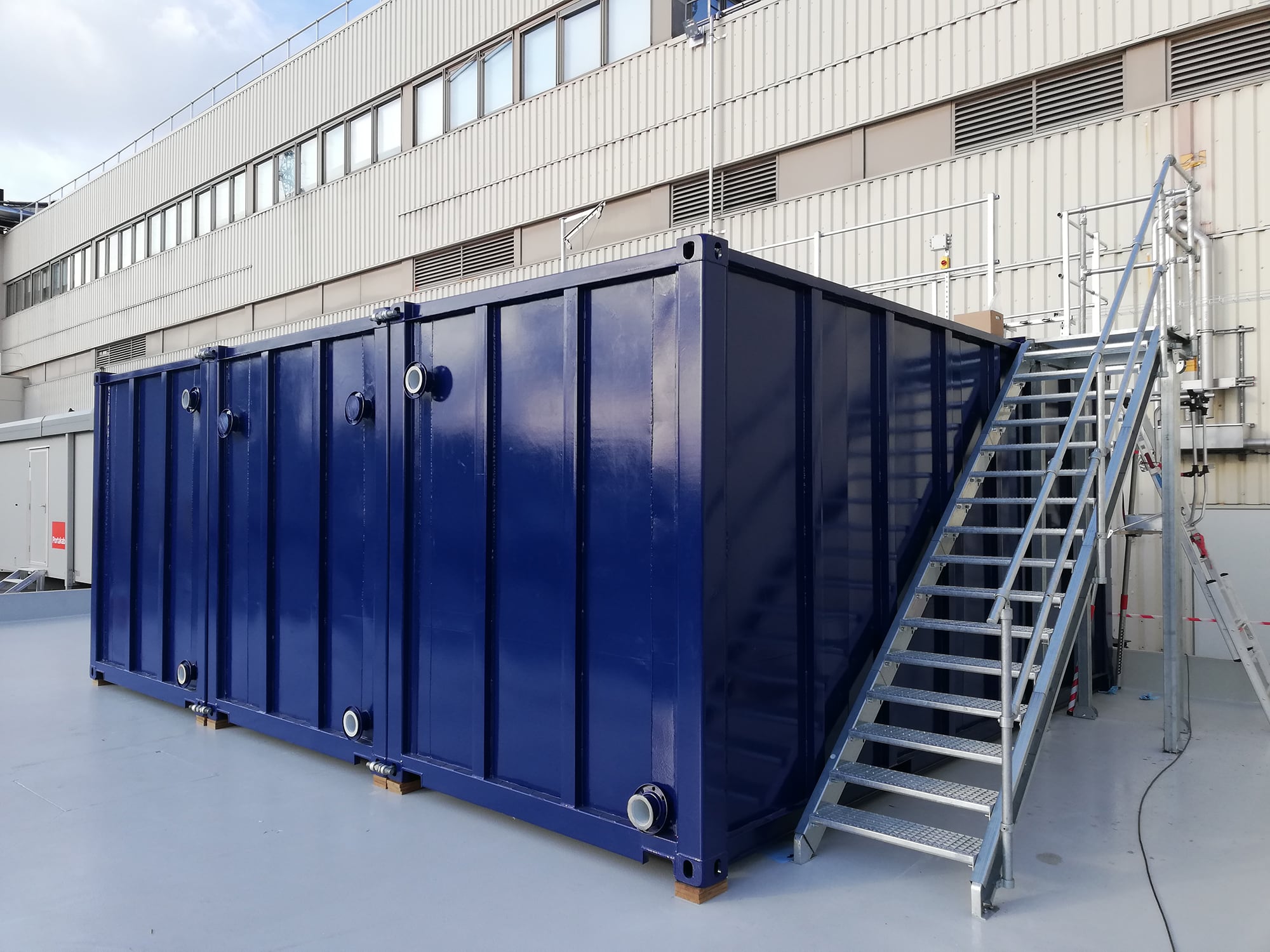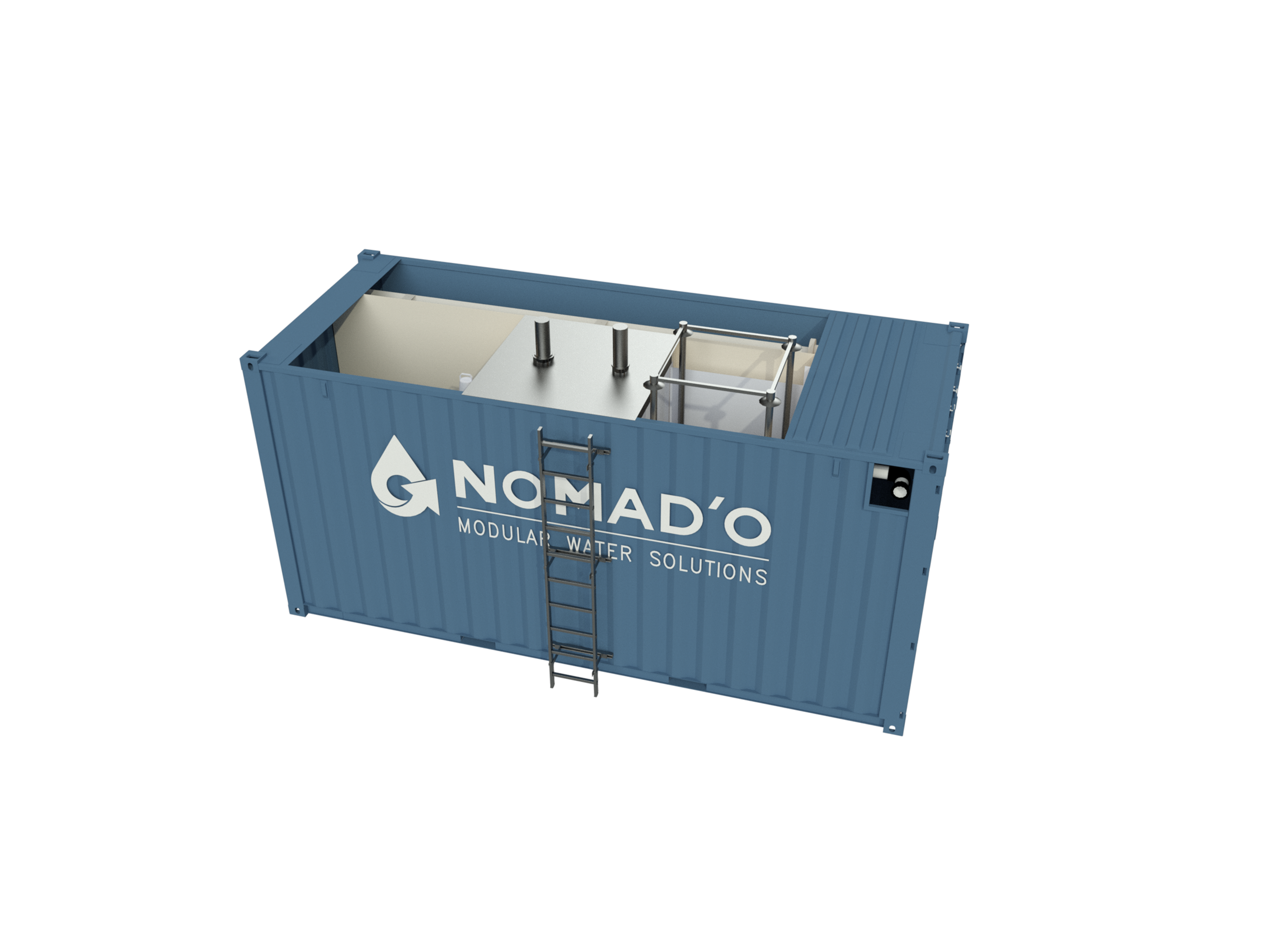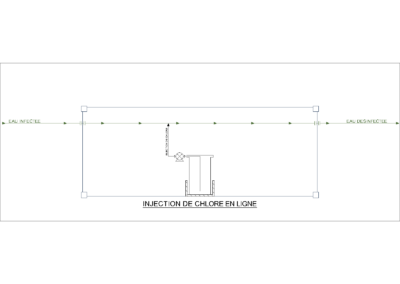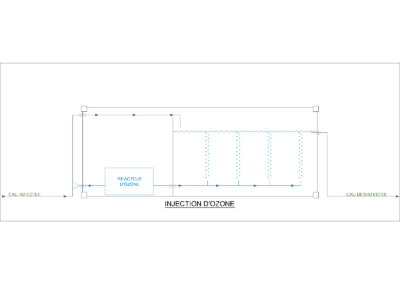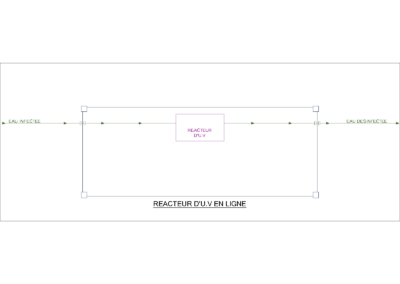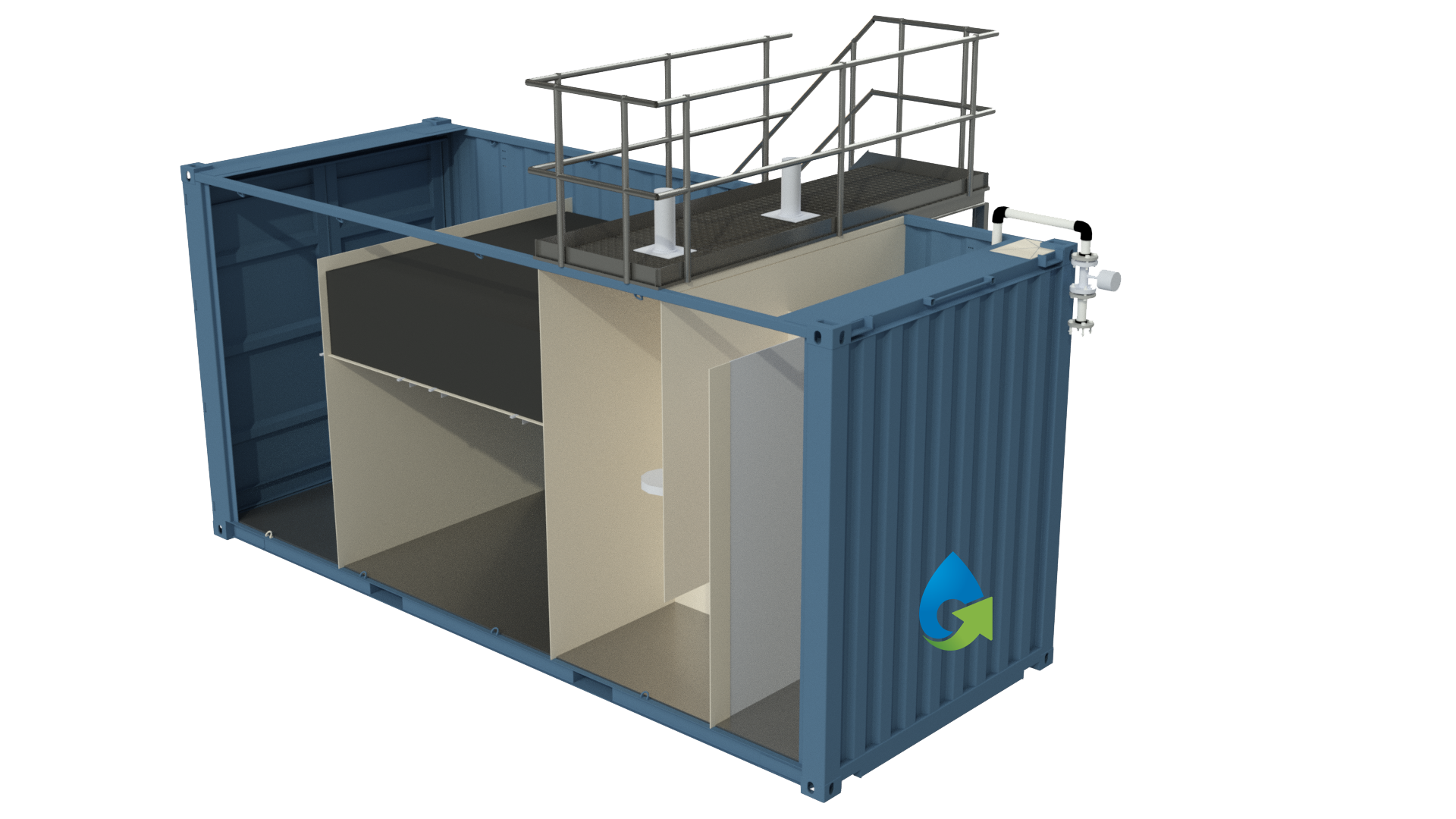
Containerized solutions
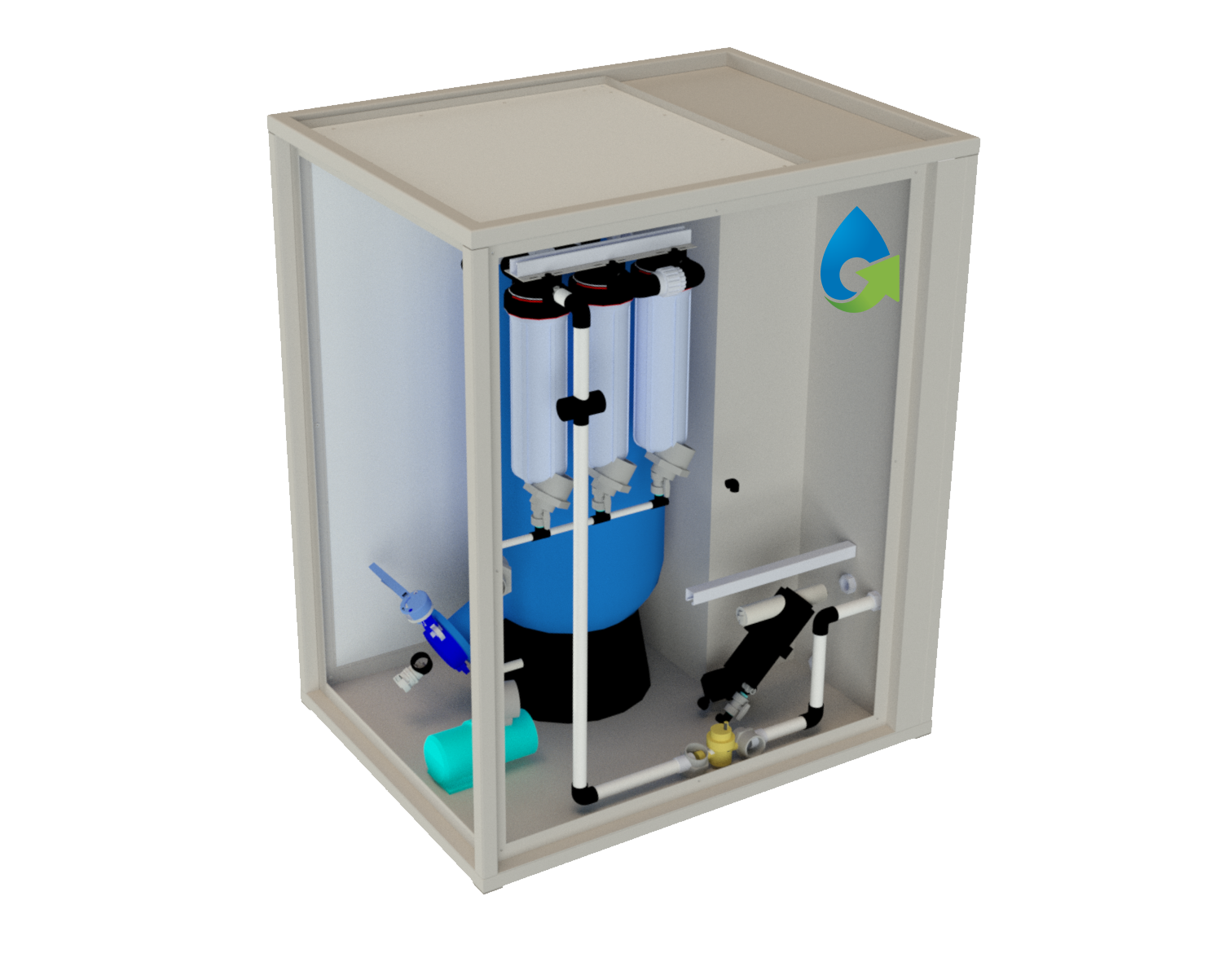
SKID solutions
Read more
Sheet metal work and welding of the hydraulic structures are performed directly inside the container. Waterproofing is ensured by a seal made of special coatings that constitutes a perfectly monolithic block. It prevents water from coming into contact with the structures. The Coatings’ properties are always chosen in accordance with the project’s specifics (Health compliance certificate, WRAS, aggressiveness of reagents or water, etc.).
Applications
Construction of an iron removal unit
Pressure boosting and water treatment unit
Treating pharmaceutical effluent using reverse osmosis
Treating concrete laitance at a major international worksite
The advantages of Nomado’s solutions

Cost benefits
- Cost-effective alternative to civil engineering infrastructures and buried facilities
- Systems that can be reused and relocated
(worksite bungalows, industrial reorganisation, end of concession) - Portable investment
- Possibility to rent, buy back or lease with option to purchase
- In-situ production or treatment

Operational and environmental benefits
- Multimodal transportation (rail, road, sea, air…)
- Simple, fast installation and commissioning
- Maintenance by our technicians possible
- Easy, rapid dismantling upon project completion
- Reduction in carbon footprint
- Worksite hazards reduced

Quality and HSE
- Treatment process adaptable to discharge standards
- Design in accordance with country standards and regulations
- Pre-built and factory tested
- Anticipation of the possibility of deteriorated operating conditions (scenario analysis)
- Targeted oversizing of critical equipment (pumps, motors, etc.)
- Specific job site conditions taken into account (heat, sand, sea, etc.)

Versatile and adaptable
- “Plug & play” design
- Possibility of adding a unit in the event of a variation in load or flow rate
- Can be integrated into an existing facility
Understanding how water disinfection works


Treatment
After having been treated and filtered, water must undergo disinfection in order to maintain its properties and withstand colonization by micro-organisms.
Moreover, regulations often require that a minimum concentration of free chlorine be maintained throughout the distribution network.
The units can use one of several disinfection techniques depending on the objective:

Process
Read more
Chlorine is the most commonly used reagent for the continual disinfection of process water and in the production of drinking water. Chlorination is an easy to implement technique.
When all pathogenic microorganisms (viruses, bacteria, algae, yeasts, …) have been eliminated, residual chlorine remains which ensures disinfection of water over time. This protects water during storage for example.
Read more
Ozonation disinfects via trioxygen (O3 or ozone) induced oxidation. Several methods exist to produce ozone on site from ambient air or liquid oxygen. This technology has many advantages and is highly efficient. Ozone disinfection is generally picked for its cost effectiveness.
Read more
UV disinfection functions with lamps that emit UV-C rays into an irradiation chamber. These rays penetrate the nucleus of pathogenic microorganisms (germs, viruses, algae, moulds, bacteria, yeasts) present in the water and destroy them by stopping their DNA replication process.
UV rays do not affect the water’s pH or its organoleptic characteristics such as odour, color or taste. The exposure intensity (a function of the lamps’ power, surface area and irradiation time, the water’s depth, …) is adjusted to the volume, flow rate and bacteria types.
Tell us about your project

CONTACT US
NOMADO
21, Boulevard du Capitaine Gèze
13014 MARSEILLE – FRANCE
+33 (0)4 84 89 52 42

